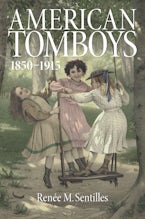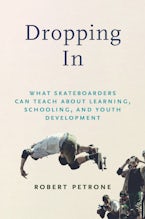- Home
- Childhoods: Interdisciplinary Perspectives on Children and Youth
- American Tomboys, 1850-1915

American Tomboys, 1850-1915
Published by: University of Massachusetts Press
Series: Childhoods: Interdisciplinary Perspectives on Children and Youth
278 Pages, 6.00 x 9.00 x 0.90 in, 9 b&w illus.
Other Retailers:
A lot of women remember having had tomboy girlhoods. Some recall it as a time of gender-bending freedom and rowdy pleasures. Others feel the word is used to limit girls by suggesting such behavior is atypical. In American Tomboys, Renée M. Sentilles explores how the concept of the tomboy developed in the turbulent years after the Civil War, and she argues that the tomboy grew into an accepted and even vital transitional figure. In this period, cultural critics, writers, and educators came to imagine that white middle-class tomboys could transform themselves into the vigorous mothers of America's burgeoning empire. In addition to the familiar heroines of literature, Sentilles delves into a wealth of newly uncovered primary sources that manifest tomboys' lived experience, and she asks critical questions about gender, family, race, and nation. Beautifully written and exhaustively researched, American Tomboys explores the cultural history of girls who, for a time, whistled, got into scrapes, and struggled against convention.
Renée M. Sentilles is author of Performing Menken: Adah Isaacs Menken and the Birth of American Celebrity.
"American Tomboys departs from the trend of focusing on literary fiction by offering a detailed historical account that contrasts the lived experiences of historic tomboys with their imagined lives in fiction. This contrast lies at the heart of this book's originality."—Laura L. Lovett, author of Conceiving the Future: Pronatalism, Reproduction, and the Family in the United States, 1890–1938
"American Tomboys is an exciting, interdisciplinary look at the ways in which concepts of gender changed from the eve of the Civil War until the onset of World War I. More capacious and probing than previous studies of gender and cultural expression during this period, Sentilles's focus on the tomboy develops a fresh way to think about the issues such a figure raises."—Joy Kasson, author of Buffalo Bill's Wild West: Celebrity, Memory, and Popular History
"This book effectively charts the rapidly changing boundaries between childhood, adolescence, and adulthood during the same period. Readers will gain a nuanced understanding of the tomboy's origins and her complicated racial history . . . This is an essential title for all libraries and all levels."—Choice
"In addition to examining the era's usual domestic fiction, Sentilles uncovered women's letters, memoirs, and diaries that showed the tomboy as critical to the creation of gender constructs during the building of a new nation . . . American Tomboys is an excellent addition to gender studies and women's studies courses."—Journal of American History
"American Tomboys adds significantly to the budding field of girlhood studies . . . Through Hurricane Nell, Calamity Jane, and the tomboy figures that came both before and after them, Sentilles creatively reveals that girls and girlhood were in fact integral to the formation of white American identity."—Western Historical Quarterly
"American culture continues to grapple with girls who refuse the still-limited terms for gender performance available to them, making it crucial to have histories like American Tomboys to provide a genealogy of such struggles for self-definition and resistance."—Journal for the History of Childhood and Youth
"Sentilles's work presents a beneï¬cial model for anyone thinking at the junctures of artistic representation and sociopolitical action...American Tomboys carefully attends to the links between historical records of lived tomboy experiences and representations of tomboys in nineteenth-century literary texts without reducing the literary to the historical or the historical to the literary."—American Literature
"American Tomboys is a refreshing look at an understudied gender identity . . ."—Legacy
"Sentilles's monograph extends well beyond literary scholarship, providing readers with a comprehensive historical-cultural analysis from the mid-century through the Progressive Era that contrasts fictional tomboys with living ones. The work is expertly written, meticulously researched, and engaging."—American Historical Review











